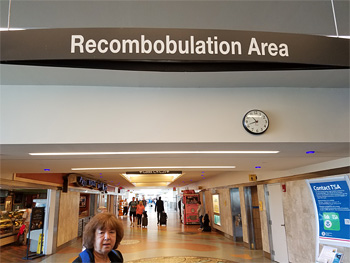I recently returned from the ASQ World Conference in Milwaukee. After going through security in Terminal C at the Milwaukee Airport, there was an area (as is typical) for putting shoes back on, and reassembling belongings and yourself. What was different this time was a sign hanging over this area that read: “Recombobulation Area.”
|
ADVERTISEMENT |
The meaning was clear and the result was a smile, a chuckle, and an immediate easing of the stress that accompanies the challenges of travel and needed airport security. When I returned home, I googled the word, “recombobulation.”

I first learned that the word is listed in the Urban Dictionary and defined as follows: “1. Something being put back the way it was, or into proper working order.” No surprise there.
…
Add new comment